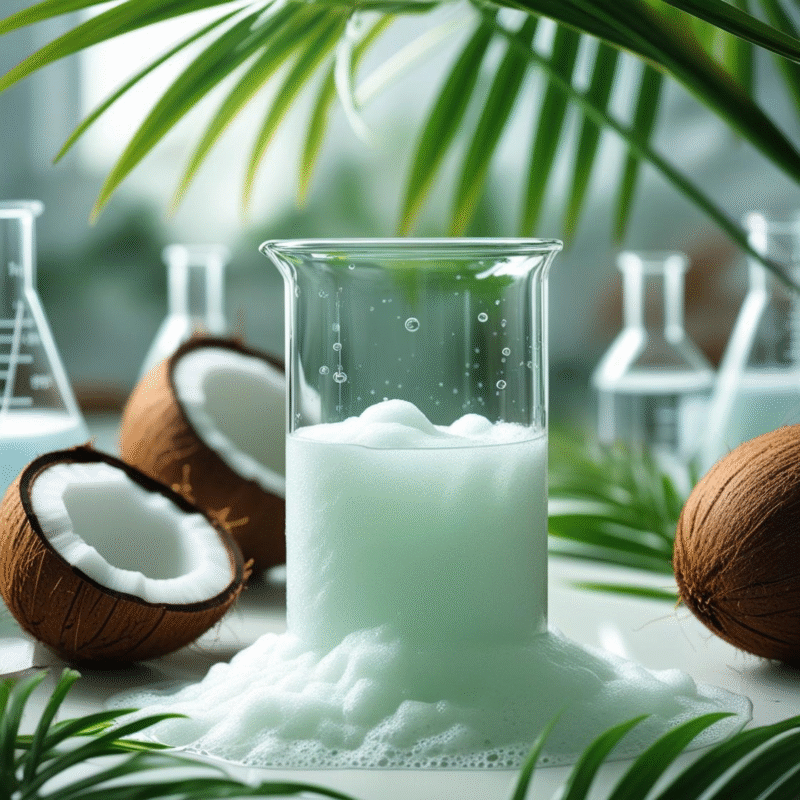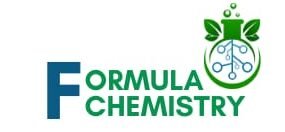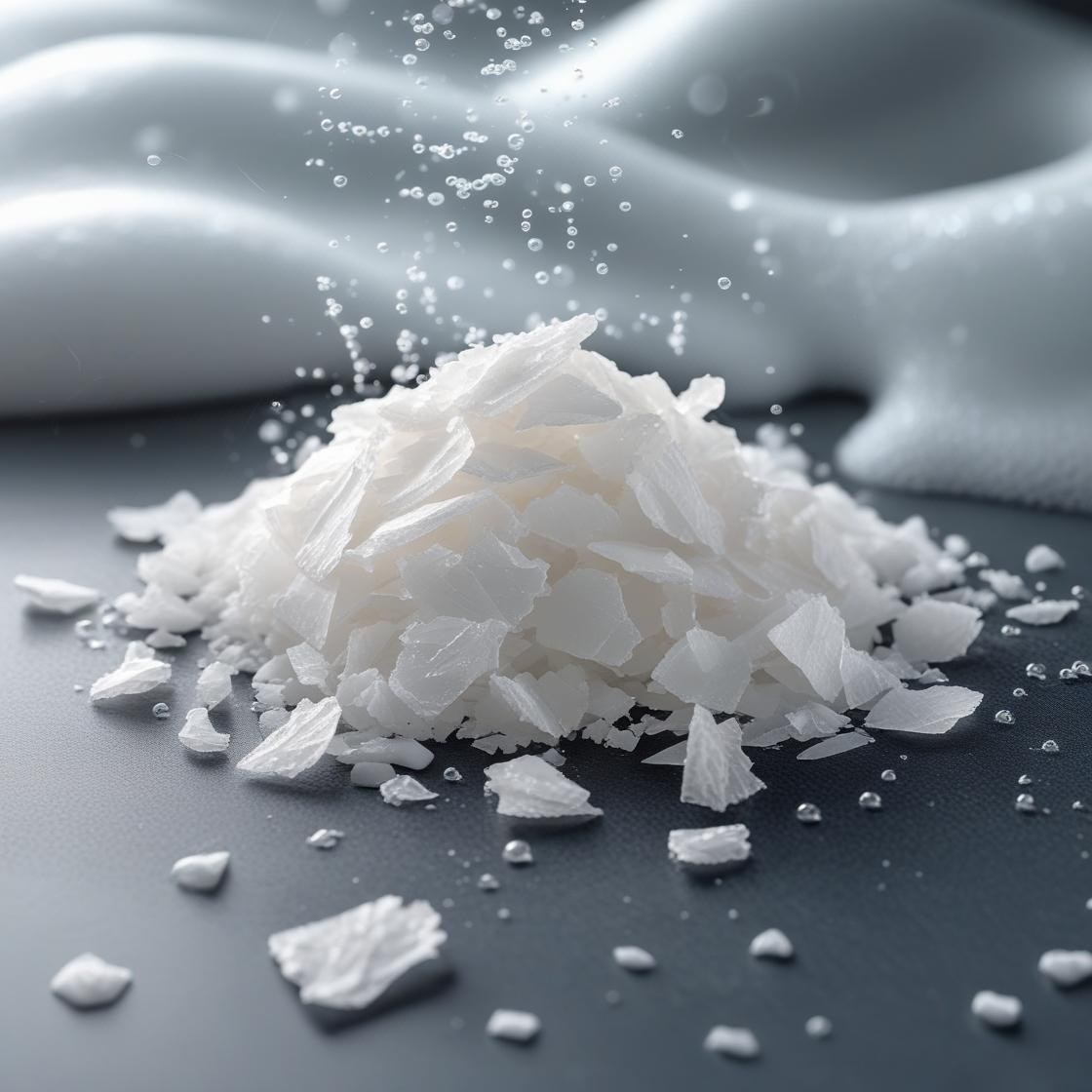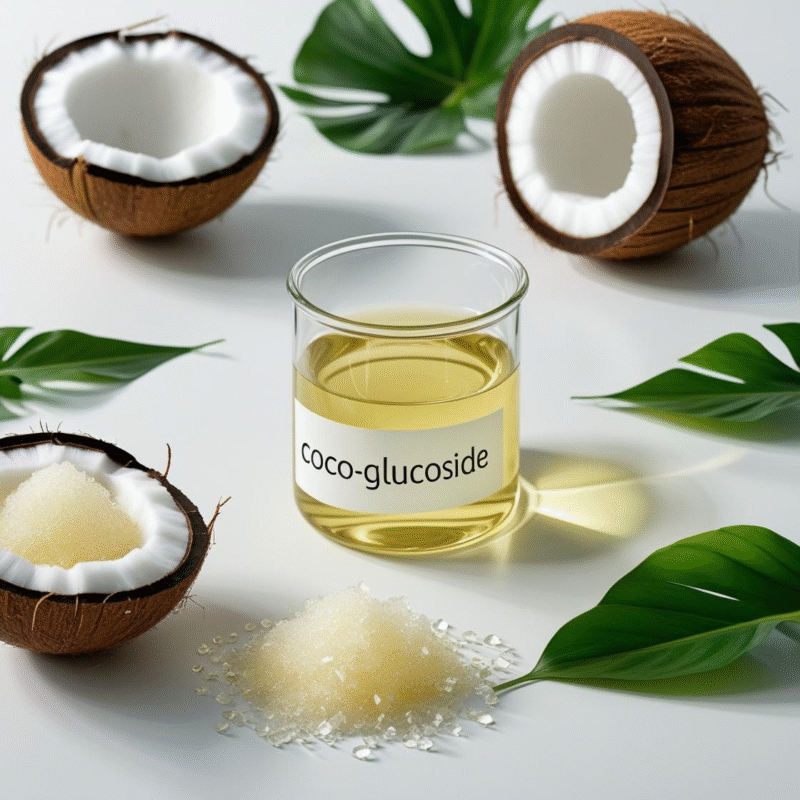CAS Number 151-21-3
INCI Name Sodium Lauryl Sulfate
Cosmetic manufacturers commonly use Sodium Lauryl Sulfate (SLS) as a surfactant for its strong cleansing and foaming abilities. It effectively removes dirt and oils from the skin and hair, making it a frequent ingredient in shampoos, body washes, and toothpaste. By lowering surface tension, SLS helps liquids mix and supports thorough cleansing. However, it can be harsh and may irritate sensitive skin. Its chemical formula is NaC12H25SO4.
Origin
Manufacturers produce Sodium Lauryl Sulfate by reacting lauryl alcohol, derived from coconut or palm oil, with sulfuric acid to create a sulfate ester. They then neutralize this ester with sodium hydroxide, forming Sodium Lauryl Sulfate.
Purpose
Sodium Lauryl Sulfate (SLS) is a powerful surfactant known for its strong cleansing and foaming abilities. It lowers surface tension to remove dirt and oils effectively from skin and hair. Its rich lather enhances the cleaning experience, but it can sometimes cause dryness or irritation, especially for sensitive skin. Despite this, SLS remains popular in shampoos, body washes, and toothpaste.
| Feature | Description |
| Name | Sodium Lauryl Sulfate |
| Type | Anionic surfactant / Detergent |
| Source | Derived from natural fatty alcohols, primarily from coconut oil or palm kernel oil |
| PH | 7.0-9.0 |
| Color | White to off-white powder or flakes |
| Odor | Mild, characteristic odor |
| Solubility | Highly soluble in water |
| Concentration | 1% to 30% |
| Physical state | Solid |
| Boiling point | 288.4°C |

Powerful Cleansing Agent
Sodium Lauryl Sulfate is highly effective at breaking down and removing oils, sweat, dirt, and environmental pollutants from the skin and hair. It dissolves these impurities by surrounding oily particles and suspending them in water, making rinsing easy and thorough. This powerful cleansing action is why SLS is a core ingredient in many shampoos, body washes, and facial cleansers.
Exceptional Foaming Ability
SLS is known for its ability to create a rich, dense, and stable foam. Foam plays an important psychological role in cleansing products—consumers often associate abundant foam with better cleaning performance. The thick lather also helps spread the product evenly across skin or hair, improving the cleansing experience and effectiveness.
Surface Tension Reduction
One of the main functions of SLS is to lower the surface tension of water. Water alone doesn’t mix well with oils or dirt. By reducing this tension, SLS allows water molecules to spread and penetrate more effectively, helping to emulsify oils and dirt so they can be washed away easily during rinsing.
Wide Versatility
SLS is used in a broad range of products—from shampoos and body washes to toothpaste, shaving creams, bubble baths, and even household cleaners. This versatility comes from its strong cleansing and foaming abilities, making it suitable for both personal care and cleaning applications.
Economical Production
Manufacturers produce SLS inexpensively because it comes from abundant natural raw materials like coconut and palm oils and is made using well-established industrial processes. This cost-efficiency enables them to create affordable cleansing products without compromising performance.
Potential Irritant for Sensitive Skin
While SLS is effective, its strong detergent nature can sometimes strip away natural oils and disrupt the skin’s protective barrier. This can lead to dryness, irritation, redness, or itching, especially in people with sensitive or compromised skin. For this reason, many products limit the concentration of SLS or combine it with soothing agents.
Biodegradability and Environmental Impact
SLS is biodegradable, meaning it breaks down relatively quickly in the environment through natural biological processes. This reduces long-term ecological risks compared to some synthetic surfactants. However, large-scale production and disposal still require environmental controls to minimize impacts such as water pollution.
Chemical and Thermal Stability
SLS remains stable across a wide pH range and under typical storage temperatures, which ensures that cosmetic and cleaning products containing it maintain their effectiveness and shelf life over time. This stability is crucial for product reliability and consumer satisfaction.
Compatibility with Other Ingredients
SLS blends well with a variety of other surfactants, conditioning agents, thickeners, and preservatives. This compatibility allows formulators to create balanced products that combine strong cleansing with mildness, moisture retention, and other beneficial properties.
Skin and Hair Conditioning Effects
Although primarily a cleansing agent, SLS can be combined with conditioning ingredients to offset its potential harshness. When properly formulated, products with SLS can leave skin feeling clean but not overly dry, and hair feeling fresh and manageable rather than stripped or brittle.
Regulatory Status
SLS is approved by major cosmetic regulatory bodies worldwide, including the FDA and EU authorities, for use in personal care products. However, regulations often set maximum concentration limits to ensure consumer safety and minimize irritation risks.
Widely Studied Ingredient
Due to its widespread use, SLS has been extensively researched for its safety, effects on skin and hair, and environmental impact. This extensive data helps manufacturers formulate safer products and allows consumers to make informed choices.
Influence on Product Texture and Stability
Beyond cleansing, SLS affects the viscosity and texture of cosmetic products, helping to thicken formulations and stabilize emulsions. This contributes to a pleasant feel, easy application, and consistent performance of shampoos, body washes, and other products.
Sensory Impact
The foaming, bubbling, and tactile sensations created by SLS contribute significantly to the user’s perception of product quality and cleanliness. These sensory attributes often drive consumer preference and satisfaction, reinforcing the ingredient’s popularity.
Applications of Sodium Lauryl Sulfate in Skincare
Cleansers and Face Washes:
SLS is widely used in facial cleansers and face washes because of its strong ability to remove dirt, excess oils, makeup, and impurities from the skin. Its foaming action helps create a rich lather, making cleansing more effective and enjoyable. However, formulations often balance its concentration to reduce irritation risk.
Shampoos and Scalp Treatments:
In hair care, SLS serves as a primary surfactant in shampoos, efficiently removing sebum, dirt, and styling product residues from the scalp and hair. It helps produce a thick foam that aids even distribution and thorough cleansing.
Body Washes and Shower Gels:
SLS is commonly found in body washes and shower gels due to its cleansing power and foaming properties. It helps in removing sweat, dirt, and oils from the skin, leaving a clean, fresh feeling.
Toothpaste and Oral Care Products:
SLS is also used in toothpaste to create foam that helps spread the product evenly inside the mouth, aiding in effective cleaning of teeth and gums.
Shaving Creams and Foams:
SLS contributes to the foaming texture of shaving creams and foams, providing lubrication and allowing for smoother shaving while cleansing the skin.
Bubble Baths and Bath Products:
Thanks to its excellent foaming capabilities, SLS is a popular ingredient in bubble baths and bath gels, creating abundant bubbles that enhance the bathing experience.
Exfoliating and Makeup Removal Products:
In some exfoliants and makeup removers, SLS helps break down oils and residues, making the removal of makeup and dead skin cells more efficient.


